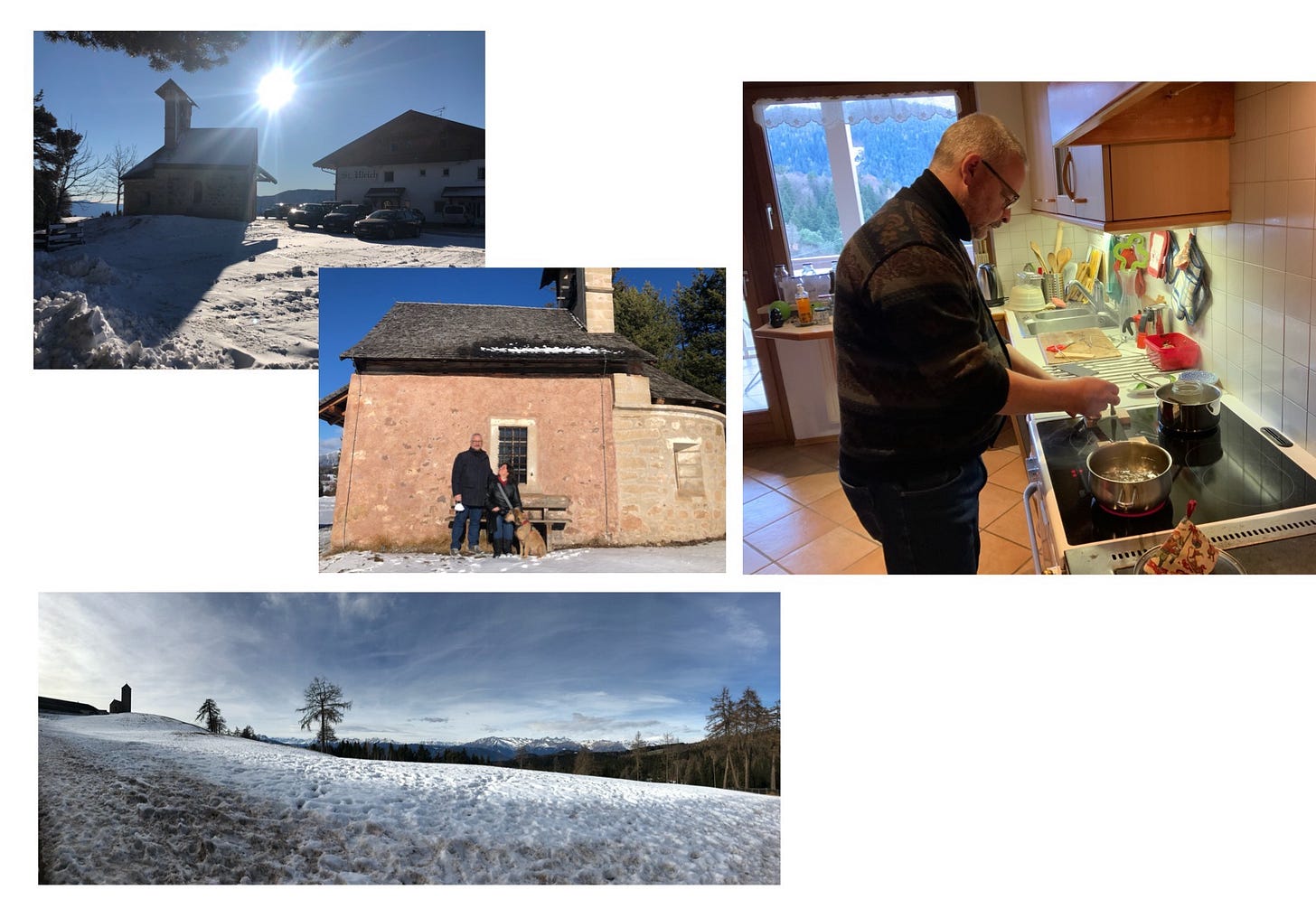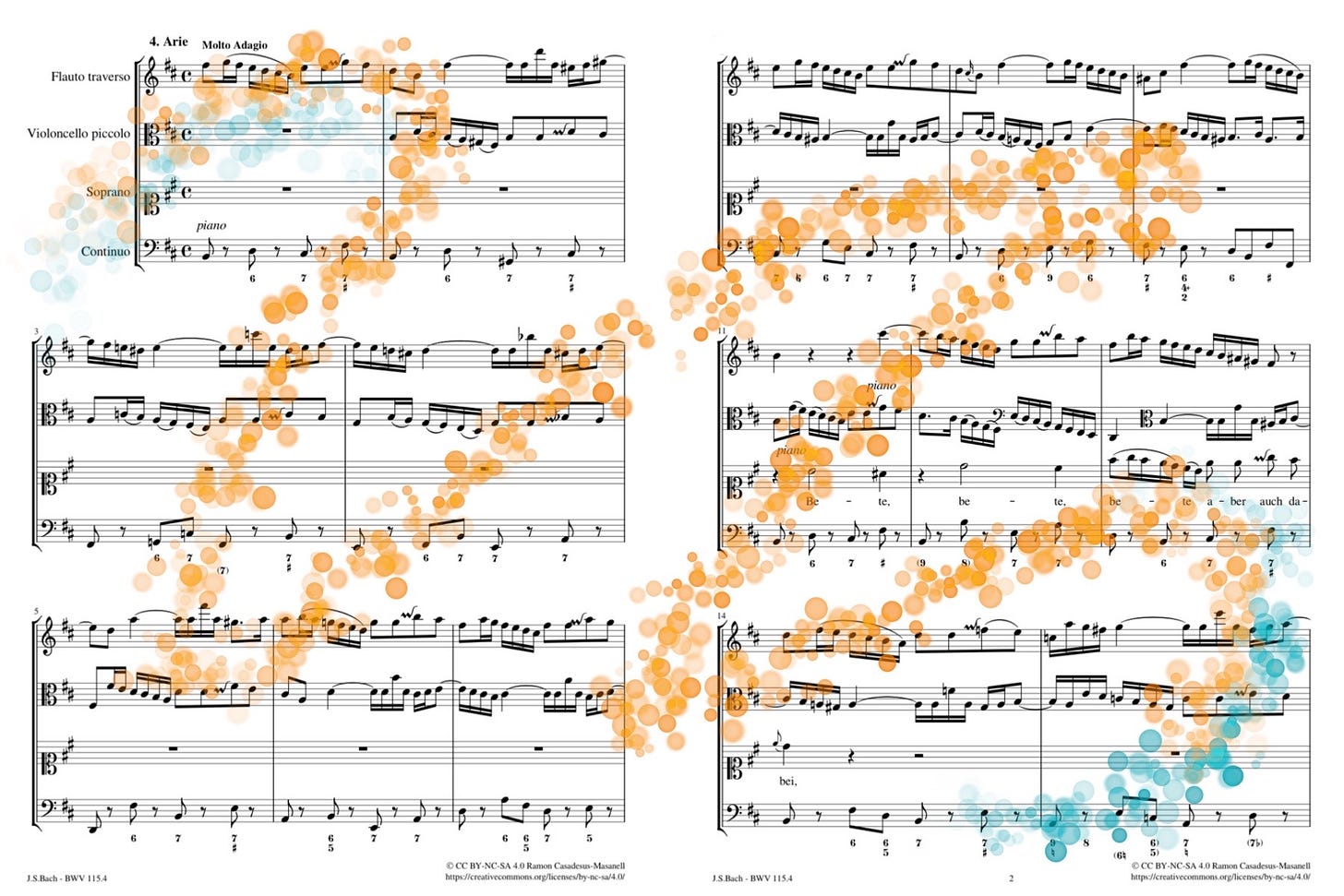J. S. Bach, cantatas featuring a solo for violoncello piccolo - part 2
Only two weeks and the cello piccolo is back, this time in full colors!
Following from
5th of November 1724 is the second appearance of violoncello piccolo in Bach’s cantatas, just two weeks after its debuts. It’s in the cantata “Mache dich, mein Geist, bereit” (Get ready, my soul) BWV 115, composed for the 22nd Sunday after trinity. Even this time, it is a soprano aria.
The fourth number is an aria for flute, violoncello piccolo, and soprano. It is a Molto Adagio, and the flute and the cello duet on a melodic part, often in the same range, in one case, the cello is higher than the flute. The violoncello piccolo here has a proper solistic role, not any more an accompaniment part in solo.
This time, contrary to the BWV 180, Bach uses all the strings, even the C, and this only two weeks after the first appearance, in which the two lower strings were practically not used. Even the flute is used in its whole range, going to its lowest notes. The lower strings are used either reaching them by descending scales, in couples of legato notes, or joining the continuo in a cadenza. When the soprano duets with the flute, during cadenzas, the soprano closes with the flute while the cello joins the continuo. This way, the cello and the soprano alternate in their dialogue with the flute, as it was spoken and unspoken words coming from the same character. The unspoken part, the intimate and emotional one, is given to the instrument.
The melodic part of the flute and the cello frequently include a sixth minor interval in the way of a sob (exclamatio, technically speaking). The lament is given to the “unspoken words” instruments.
J. S. Bach in this aria uses the whole range of the instrument, from low C#2 fifth string, to high C5, first string third position. In the two noticeable sources remaining, the starting clef is Alto (for the Cambridge manuscript) or Treble (in the Berlin manuscript, which is a score copied from the original set of -lost- separate parts).
This is the only video I have found on YouTube using a Violoncello da Spalla. If you know of another one, please add the link in the comments below. Our aria is at 14’42
You can find more about Bach’s Cantatas in Koji Otsuki detailed work here.
Updates from our workshop
We took it easy this week. Not enough to say that we enjoyed an holiday, simply we went for a couple of walks, we saw some friends, we started to play together again. We worked every day on our instruments, but to prepare parts, so nothing exciting to show. We are making the tailpiece and the fingerboard. The fingerboard has a spruce core, maple sides and ebony veneer. The tailpiece is simply in hardwood with ebony veneer, but it has a saddle to prevent excessive angles in case one wants to use modern strings.

This week I started practicing again, I didn’t practice since last July, and I don't practice regularly since three years now, maybe more! I decided to practice on Violoncello da Spalla, as I need to get more confident reading different keys and playing on five strings without watching down. And I need to get back to a professional level, so the only way is practicing! I took the clue of Hilary Hahn starting her fifth #100daysofpractice round and I joined in, so if you want to see what I can do with my 20-min-per-day efforts, I post a few bars on instagam everyday. Even better if you’d like to join in! it’s not about practicing 100 days I a row, but about finding our calm spot to practice every day and do our little step to move a bit further. It’s more about self-emphaty than self-pressure.
Featured video of the week
Some more Bach. We never have enough of Bach!








